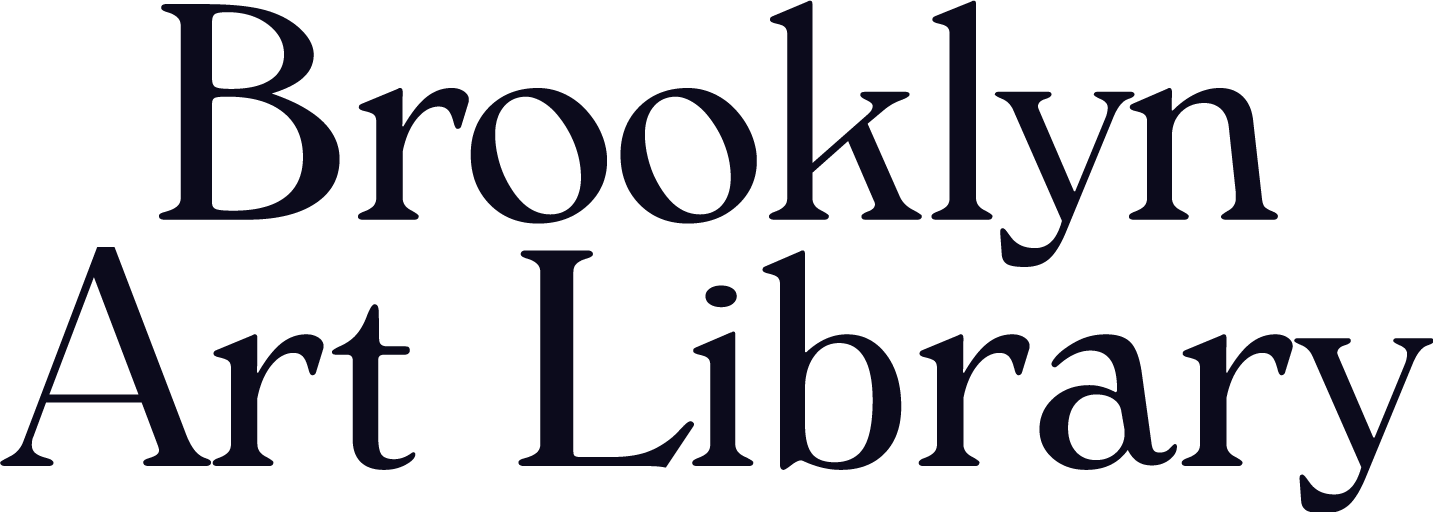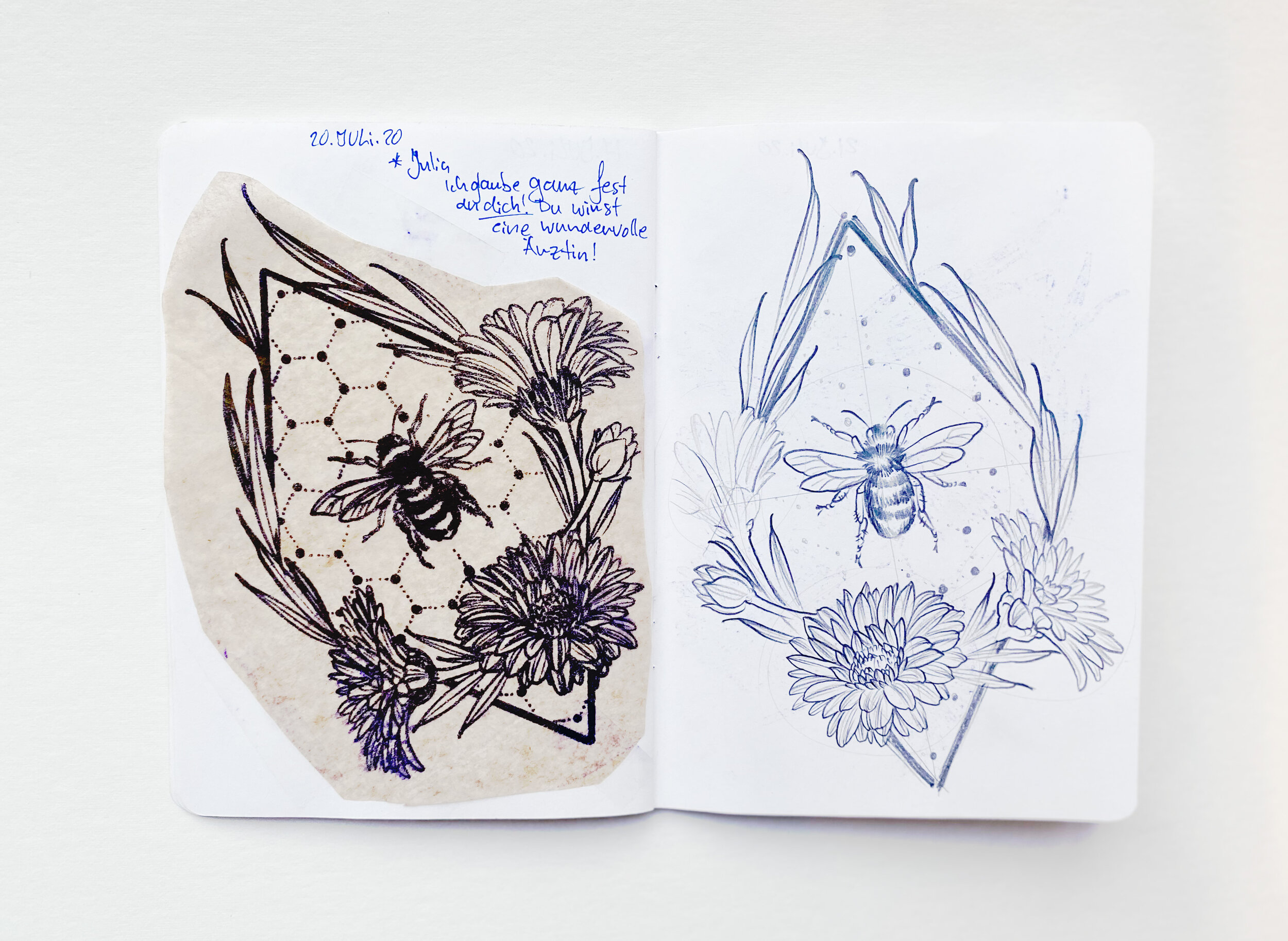Small Talks: Julietta Weimer
Julietta Weimer is a tattoo artist and illustrator, and a co-founder of Das Blaue Atelier. Originally from Ukraine and now based in Lüdinghausen, Germany, Weimer has developed a uniquely lush style of drawing and tattooing, adorning both sketchbook pages and her clients’ skin with blooming botanical imagery and monochromatic scenes of Gothic and ecological beauty. You can follow her creative practice on Youtube and Instagram, and support her work by subscribing to her Patreon and checking out her shop for original illustrations!
On February 23rd, 1PM EST, Julietta will lead a workshop centered on color studies and layering as part of our February workshop series.
You participated in the Sketchbook Project for the first time this past year! What was the process like creating your “Tattoo Diary”?
It reminded me a lot of my apprenticeship days. When I was allowed to tattoo for the first time, 10 years ago, I also kept a “diary” of this kind. The line-work and the stencil stuck next to each sketch.
Oftentimes, the most daunting part of a sketchbook is beginning with the first blank page (like starting a tattoo on bare skin). What inspired you to begin filling out your sketchbook with a mix of illustrations and tattoo stencils?
I always have my sketchbook with me. In it, I draw every illustration for tattoos, as well as designs for clients. Your sketchbook came, just in time, in my mailbox. Since my old one was full and the drawing had been completed for the day, I sat down and began to directly draw in it, filling out the first new page.
You co-opened your own tattoo studio, Das Blaue Atelier, almost a year ago now. How does sketching and keeping sketchbooks play a role in your creative process as a tattoo artist?
For me, a sketchbook is essential! I draw the tattoo design together with the client, in-person. During the whole process, we sit together and I draw the design in front of them. This is how the client sees all of the work that goes into their tattoo. It’s very intimate, but I need that deep connection to understand the meaning behind every individual idea. Sometimes, you can’t describe it in words, so you have to draw.
Do you consider tattooing to be a form of sketching?
Oh, yes! I really like the tattoo sketch style.
How has your art style changed over the years?
My sketches used to be very confusing. The lines were wonky and looked like they were searching for something. Over the years, they have stabilized and I am in much more control.




How did you start tattooing? Were you primarily self-taught or did you work in a studio?
As a studied graphic designer, I have a good base. I learned tattooing traditionally in a studio. I went to a lot conventions with my boss—Ink-N-Iron, New Zealand Tattoo & Art Festival, and many more. There, I was always able to pick up new things. Over 10 years ago, when I started, there was no YouTube tutorials for that. You could only found something, by looking closely and asking. If you found a tattoo artist and wanted to learn something about his way of working, was the only way to make an appointment with him and watch him closely.
When you started tattooing, did you notice your illustrations begin to change? Or have your tattoo designs always reflected your sketches and illustrations?
I was very influenced by traditional and neo-traditional tattoo artists. From the traditional style, it was the reduced and simple way of design. From the neo-traditional, it was the details, decorations, and varieties of colors. And then, there was the freehand style: a design that is created entirely on the medium of your skin. From the sketch and final drawing to the finished tattoo, it's a completely different approach, that has shaped my style a lot.


Opening a tattoo studio is quite challenging, and women-owned studios are still quite rare in the industry. Why did you decide to open Das Blaue Atelier?
It has always been my dream to have my own studio. The studio opened on June 2nd, 2020 relatively soon after the first German lockdown. The premises belonged to my mother-in-law, who sold wool with her two closest friends. The right opportunity came in terrible times. My dreams came true and I couldn’t be happier.
What were some challenges you faced opening and running the studio? What is next for the studio and your personal tattooing practice?
Tattooing should finally be recognized as an art form. This is the statement I want to make with my studio. I want to show that not all of us are out of jail. Many organizations are already committed to this. Tattooing has given me so much, I just want to give something back.
Do you have any advice for budding tattoo artists who are hoping to build their portfolios and take on apprenticeships?
During my apprenticeship, it was very important to my boss to be able to use many different styles and techniques. There wasn't much artistic freedom mixing them with the client's request. Today, many clients choose the tattoo artist not only for their art, the client also wants to get to know you. What are you standing for? What are your interests? What do you want to express with your work? After they scroll through your social media and get to know you a little bit, they will contact you and ask for an appointment, to discuss their designs. So my recommendation would be to draw and paint what represents you. Everyone can get to know you through your portfolio and see what your values are. From that point, you will learn about the famous legends of the scene and the techniques behind tattooing during your training in the studio with a good boss.



What was the greatest piece of art-making advice you’ve ever received?
In almost every sketchbook, I write on the inside flap, "I give myself permission to draw ‘ugly’ and make mistakes." The sketchbook should be a safe place to try new things out. As artists, we are too quick to judge our drawings. Criticizing yourself during the process doesn’t help. Don’t be so harsh on yourself.
Who are some artists that influenced your own creative development?
Artists: John James Audubon, Alphonse Mucha, Frida Kahlo, J.C. Leyendecker, James Jean.
Tattoo Artists: Ed Hardy, Sabine Gaffron, Alix Ge, Claudia De Sabe, Horikyo.



Where do you find inspiration today?
Some of my main inspirations are cartoons and toys from the 80s and 90s, old horror films, science fiction novels, video games, comics, and folklore.
How can people support your work?
Just the same support like all other artists! With the purchase of prints or pictures, a follow on YouTube and a like on Instagram!


